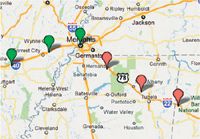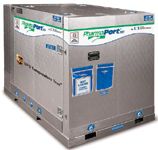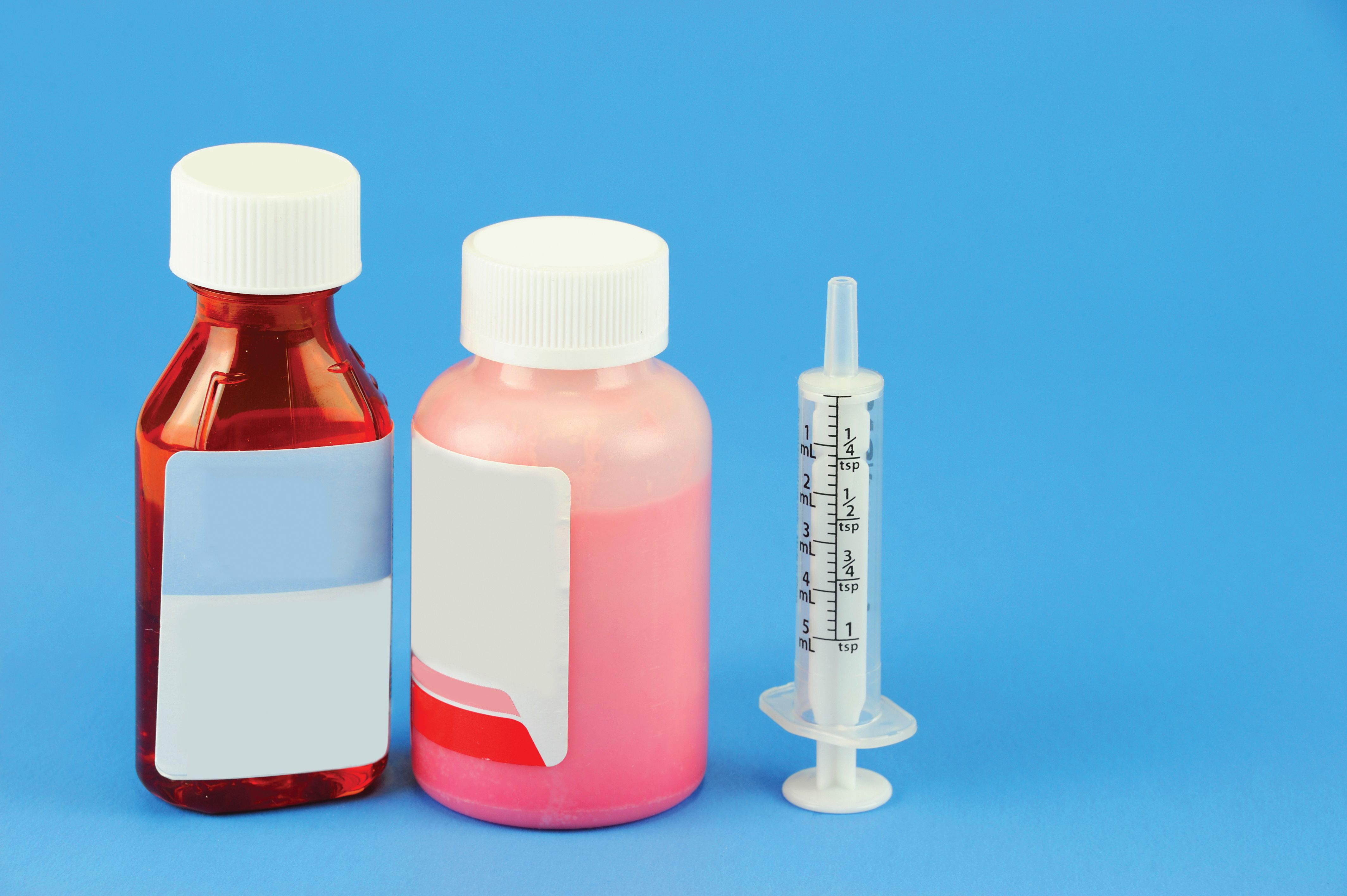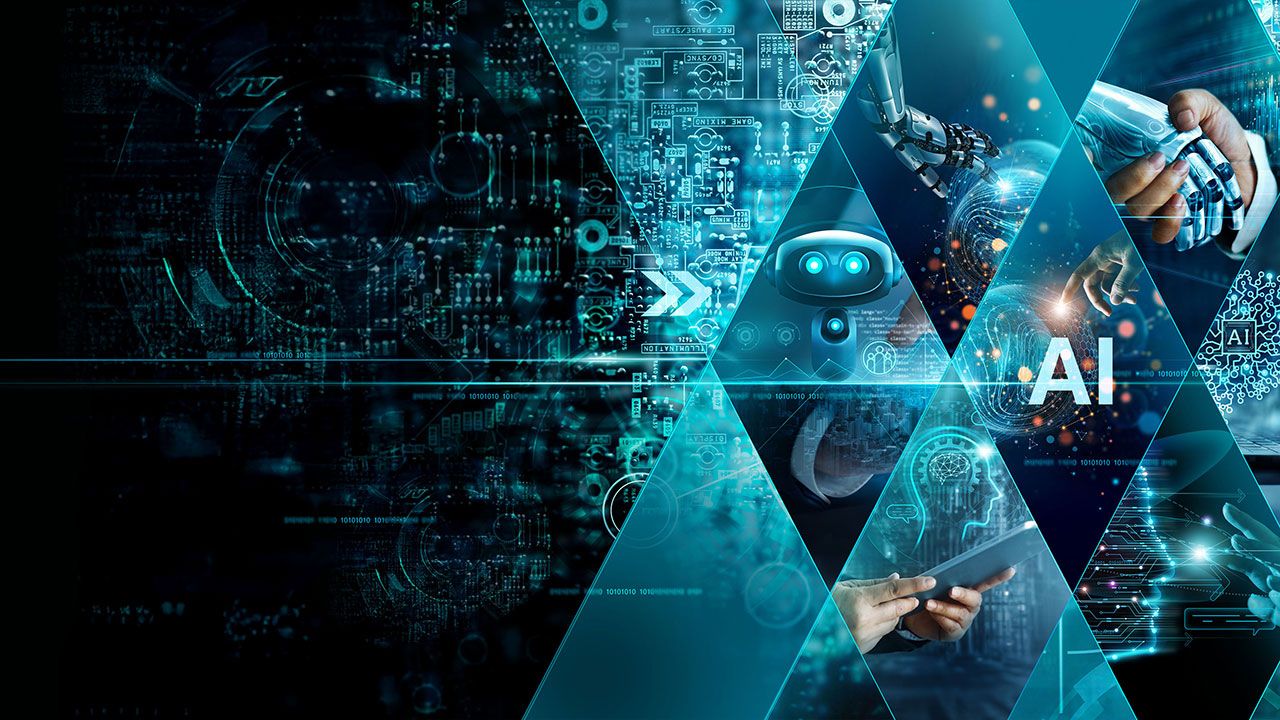News
Article
Pharmaceutical Technology
Temperature-Controlled Shippers
Author(s):
Packaging and monitoring tools protect temperature-sensitive pharmaceuticals.
Pharmaceutical manufacturers with temperature-sensitive products enjoy an ever-increasing variety of protective packaging, environmental monitoring, and shipment tracking options.

Hallie Forcinio
Protective packaging
Insulated shippers with vacuum-insulated panels and refrigerants based on phase-change materials have captured market share from traditional expanded polystyrene (EPS) and polyurethane structures and gel packs or dry ice. High-performance shippers feature controlled compression lids, vacuum-insulated panels, and +5 °C phase-change material that provides precise and consistent melt-freeze transition for temperature control. The shippers weigh approximately 50% less than traditional insulated shippers and cut distribution costs. The design streamlines the preconditioning process and maintains payloads at 2–8 °C for 140 h in extremely hot or cold ambient conditions, reportedly 30% longer than other options. Thermochromic labels change color to provide visual verification that shippers are ready to pack (ORCA 2–8 °C shippers, Intelsius).
Many protective packaging designs are single use, but efforts to choose more sustainable options are spurring interest in reusable designs. One option, available in a single-use or reusable configuration, protects entire pallet loads and maintains 15–30 °C for up to 120 h. The single-use configuration uses a wood pallet and corrugated outer covering, while the reusable unit uses plastic for the pallet and outer covering (Pallet Transporter CRT, Cryopak).
Reusable designs have become so popular that one supplier has expanded its regional service center to provide more space for refurbishing its temperature-controlled shippers. Services include quality inspections and maintenance, component replacement, sanitization, and cleaning via a soon-to-be-certified ultraviolet decontamination process. The company also performs kitting and/or packaging tasks, preconditions shippers, and provides tracking, custom reporting, and certified testing functions. Its latest reusable design replaces standard plastic or kraft corrugated outer boxes with a high-density polyethylene outer container that has a projected lifespan of two or three years. The hardshell outer container holds six vacuum-insulated panels that can be removed and replaced independently to reduce maintenance costs. Initially available in 10-, 12-, and 16-L sizes, the design also enhances thermal performance up to 15% versus corrugated outer box constructions (Credo DuraCUBE, Minnesota Thermal Science).
Prequalified units represent another trend. Options include a temperature-controlled system capable of maintaining 2–8 °C in wintery conditions. Designed to withstand the extreme cold of Canadian shipping lanes, the unit protects its contents in ambient conditions of -25 °C for more than 72 h (TimeSaverCN72 Extreme Cold PreQualified Shipper, Cryopak).
For less stringent applications, another prequalified design maintains small shipments at 20–24 °C in hot or cold ambient conditions for up to 24 h. The shipper offers payload space sufficient for up to four, 20-mL vials (TimeSaver 24 CRT Mini shipper, Cryopak).
A family of prequalified and validated shippers accommodates shipment sizes ranging from a single syringe to an entire pallet. Most designs combine EPS or low-density polyethylene foam insulation with refrigerants to maintain desired temperatures for 60–120 h (InTemp Pallet Solutions and InTemp Temperature Control Packaging, Inmark). A new in-house laboratory validates the temperature-controlled packaging.
Another family of prequalified shippers has added a 5-L size to 11- and 36-L options. The reusable design provides protection for up to 120 h in refrigerated, frozen, and dry-ice temperature ranges depending on the phase-change material used for the preconditioned thermal-regulating unit (IntelliTherm shippers, Intelligent Thermal Solutions).
Shipment monitoring
Data loggers track conditions during shipment. A second-generation, label-like unit with integrated temperature sensor and USB connection point affixes easily to packaging (see Figure 1). The temperature sensor is calibrated during manufacturing to standards set by the US National Institute of Standards and Technology (NIST) and is accurate to ±0.5 °C throughout its operating range of -30 to 60 °C. During transit, it takes a surface reading of the object to which it is attached. Light-emitting diodes on the label flash if a temperature excursion occurs. Once at its destination, an integrated USB connection point allows the label to be plugged directly into a computer, thereby eliminating the need for a reader or proprietary software to download cold-chain data. The label automatically generates a PDF file containing complete time and temperature history, including graphs and summary data. New features include an embedded, comma-separated-values (CSV) file, which eliminates the need for third-party software to generate the CSV file. The embedded CSV file lists time and temperature data in five-minute increments. The CSV file may be copied and saved to another location per the user's standard operating procedures (SOPs). The data from the file may be manipulated using other programs in accordance with company SOPs (BIOmed XpressPDF Temperature Monitoring Label, PakSense).

Figure 1: A label attaches to a package to monitor transit conditions (BIOmed XpressPDF Temperature Monitoring Label, PakSense).
The same compact form and USB technology is used for single-use data loggers introduced at INTERPHEX 2012. Units can be ordered precalibrated and preprogrammed for specific temperature ranges (Cold Chain Logger CCL100, Vaisala).
Complete cold-chain protection also relies on sensors that monitor storage areas such as cold rooms, refrigerators, and freezers. Battery-powered wireless temperature loggers provide alerts in real time if conditions deviate beyond set parameters. Some models also monitor humidity or pressure as well as temperature. Sampling intervals can occur as frequently as once per second with an accuracy of ±0.1 °C. The units also can monitor autoclaves, sterilization tunnels, and other temperature-controlled areas. Proprietary software automates validation testing, ensures data security, and generates a variety of reports (XpertLog Wireless Thermal Validation & Mapping System, Lives International Corp.).
A system based on radiofrequency identification (RFID) consists of an RFID smart card, capable of monitoring time and temperature, an RFID reader with optional integrated barcode scanner, and the Internet (see Figure 2). The RFID smart card is placed on the pallet, individual case, or other designated location. To start the monitoring process, the reader scans the pallet's barcode. Temperatures are recorded at specified intervals. When the shipment arrives at its destination, tags are read to determine what temperature fluctuations have occurred. Results are transmitted via USB or Wi-Fi to a dedicated page on the Internet, and email and text alerts can be sent to supply chain partners. Smart cards also may be returned by mail for download of the data, which is available online within 48 h. The tags can be restarted at any time to record new segments. For example, as pallets are received, tags continue to record time and temperature in the truck, on the dock, and in the warehouse. Tags can even be assigned new ownership and time and temperature parameters as the shipment moves through the supply chain (TempTRIP web-based, cold-chain, time/temp monitoring process, TempTRIP).

Figure 2: Data gathered from package sensors is used to plot the cold-chain journey online, and red flags show when the load experienced off-spec temperatures (TempTRIP web-based, cold-chain, time/temp monitoring process, TempTRIP).
Technology originating in Australia also makes use of active RFID technology, GPS, and Internet-based tracking software to monitor products in-transit, warehouse, or refrigerator. The system, already in use in the food industry, collects data and provides real-time alerts when temperatures deviate outside required parameters (Fresh InTransit, Fresh InSide, Fresh Mobile hardware and software, CoolTrax USA).
New software allows access to data collected by a temperature-monitoring system or uploaded by supply-chain partners, such as shippers, receivers, and carriers. The program instantly and automatically archives data on incoming perishable shipments at the time of arrival. The wireless transmission to a secure server eliminates the need to download individual recorders (Automatic Temperature Monitoring System, Cargo Data).
For receiving dock employees, a handheld device provides immediate access to temperature data, which eliminates the need to wait for a download before deciding to accept or reject a shipment. The unit also transmits data for permanent storage (Express handheld receiver, Cargo Data).
Systems approach
An innovative air-freight container combines product protection and monitoring for temperature-sensitive pharmaceuticals, vaccines, and biologics (see Figure 3). Fully validated and tested to confirm compliance with industry standards, the container is powered by a rechargeable battery and heats or cools as needed to maintain the proper temperature range for more than 100 h regardless of the ambient temperature. Built-in sensors monitor shipment condition and GPS location and transmit the data in near-real time via a standard global cellular network. If alerts are triggered, indicating a potential risk, the carrier can intervene with preestablished contingency plans to rescue a shipment in distress and prevent product loss. While in transit mode, the container neither consumes energy nor emits external heat, vapor, or gases, thereby allowing it to fly in upper- or lower-deck aircraft positions. This offers more routing options, especially in constrained transportation lanes. The container also has approval from the Federal Aviation Administration to fly on narrow- and wide-body aircraft, which allows a high degree of flexibility in flight selections and opens access to markets globally (PharmaPort 360, manufactured by Cool Containers and available through UPS Temperature True service, UPS).

Figure 3: An air-freight container protects and monitors temperature-sensitive pharmaceutical and biotechnology products (PharmaPort 360, manufactured by Cool Containers and available through UPS Temperature True service, UPS).
Integrated product protection and monitoring also can include options, such as a precharged liquid nitrogen, dry-vapor container that maintains -150 °C for up to 10 days. With 10 days of holding time, the shipper supports complex international itineraries and eliminates the reicing required with dry-ice shipments. Because the unit is delivered ready for packing and picked up for refurbishing or recycling after unloading at its destination, shippers do not need to purchase, inventory, or manage insulated boxes and dry ice (Deep Frozen Shipping Solution, FedEx).
If needed, an RFID data logger, GPS sensor, and web-based platform monitors temperature, humidity, barometric pressure, light exposure, and location; provides near real-time visibility for shipments; and sends alerts if preset journey parameters are exceeded. The reusable data logger/GPS unit also is available for a monthly fee (SenseAware device and information service, FedEx).
Hallie Forcinio is Pharmaceutical Technology's Packaging Forum editor, 4708 Morningside Drive, Cleveland, OH 44109, tel. 216.351.5824, fax 216.351.5684, editorhal@cs.com.
Newsletter
Get the essential updates shaping the future of pharma manufacturing and compliance—subscribe today to Pharmaceutical Technology and never miss a breakthrough.






